(Copenhagen 1863 – Copenhagen 1931)
The Rest
Oil on canvas
H. 72 cm; W. 79 cm
Signed lower right and dated 1911 (twice)
Exhibition: 1963, Foreningen for National Kunst (National Art Exhibition), Charlottenborg, no. 60
Gustav Vermehren was born into a creative family and very quickly opted for an artistic destiny. His father, Frederik (1823-1910) was an accomplished painter, renowned for his idealized rural scenes that “romanticized” the working classes. As a child, Gustav learned the basics of painting from his father, which was surely the catalyst for his formal education. It is interesting to note that throughout his career, he remained faithful to his father’s style, albeit using a broader, less smooth brushstroke. Faced with the new, freer approach of the French Impressionists, he retained his own ideals, unwilling to embrace contemporary stylistic trends. At the end of the 19th century, it became fashionable to adopt a looser brushstroke and flood canvases with light and bright colors. Yet, Gustav, and his younger brother Sophus (1866-1950), remained faithful to their father's ideals. His apprenticeship continued at the Academy of Fine Arts from 1881, and his first paintings were sent to the Charlottenborg Salon in 1888. During his career, he also served as curator of the royal art collections and an art critic. Our canvas, dated 1911, depicts an old man sitting on a chair, his head tilted, absorbed in thought, while a woman appears half-open in a doorway, seemingly observing him discreetly. The scene takes place in a courtyard bathed in light, with a subtle play of shadows and textures on the walls, foliage, and clothing. The realistic treatment of materials—wood, fabric, skin—and the balanced composition demonstrate Vermehren's great technical mastery. Here, he places himself in the direct artistic tradition of his father, who had died the previous year. This painting is a perfect continuation of the Vermehren family's work. Here, we find the key elements of his style. A precise naturalism, inherited from Danish academic teaching. An empathetic gaze on the elderly figures, often isolated or immersed in a silent interiority. A rural atmosphere, reminiscent of his other paintings such as “Old Man with a Bench” or “Resting at the Edge of the Field.” The theme of time passing and rural solitude runs through much of his work. In this 1911 painting, the old man's posture and the soft light evoke both the weariness of age and the serene beauty of simple things—a frequent motif for Vermehren, who sought to immortalize everyday Danish life.


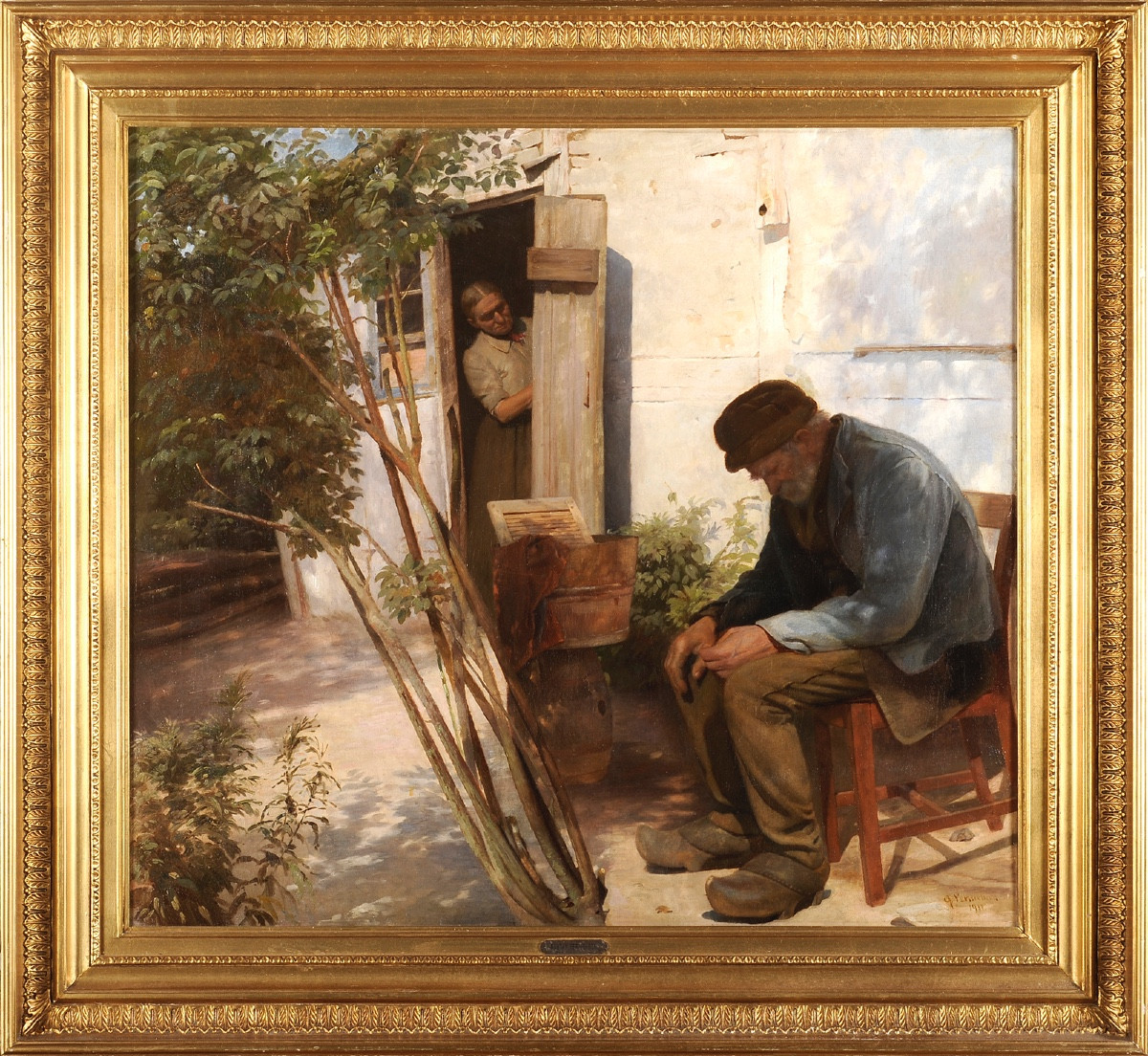
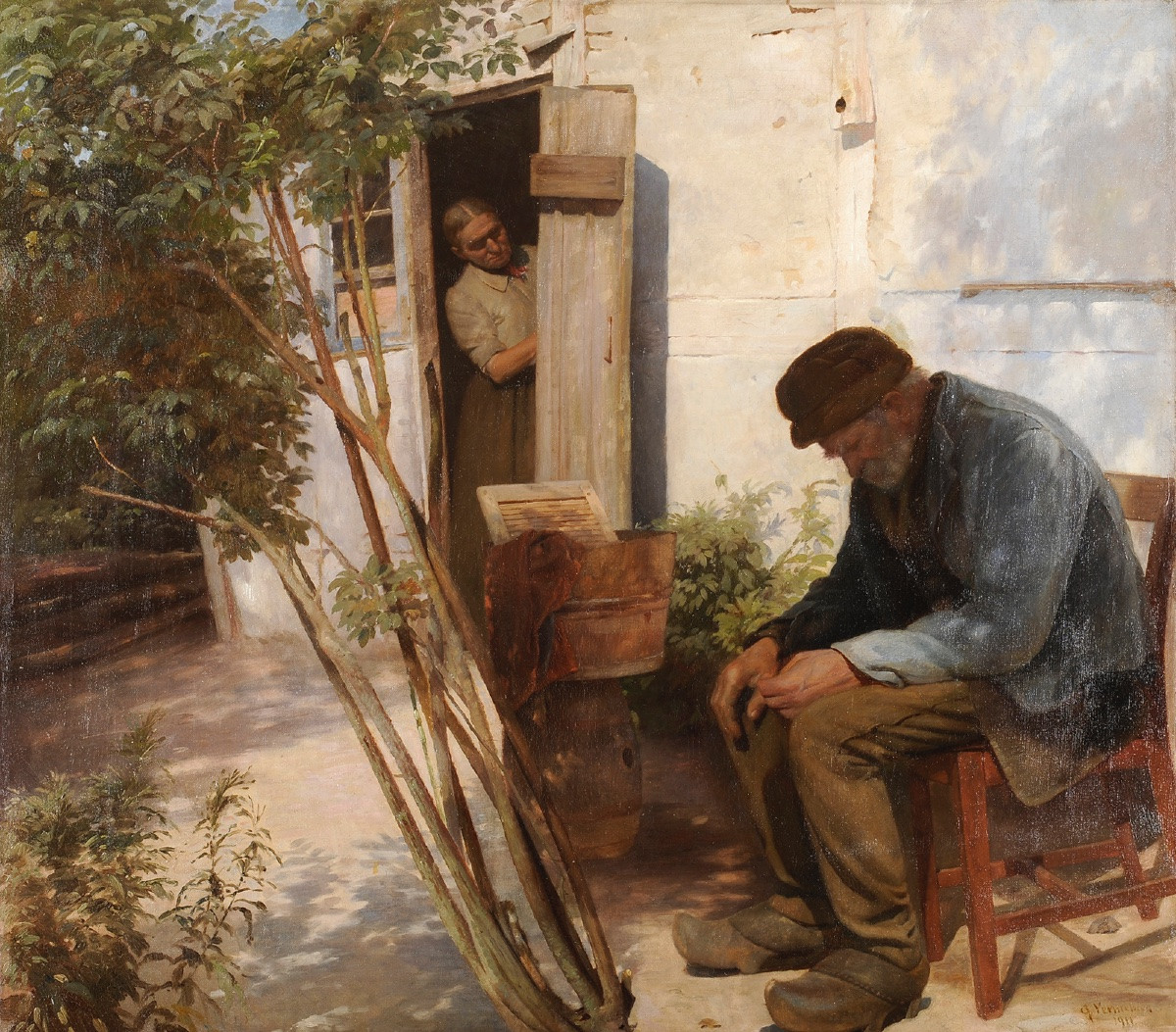
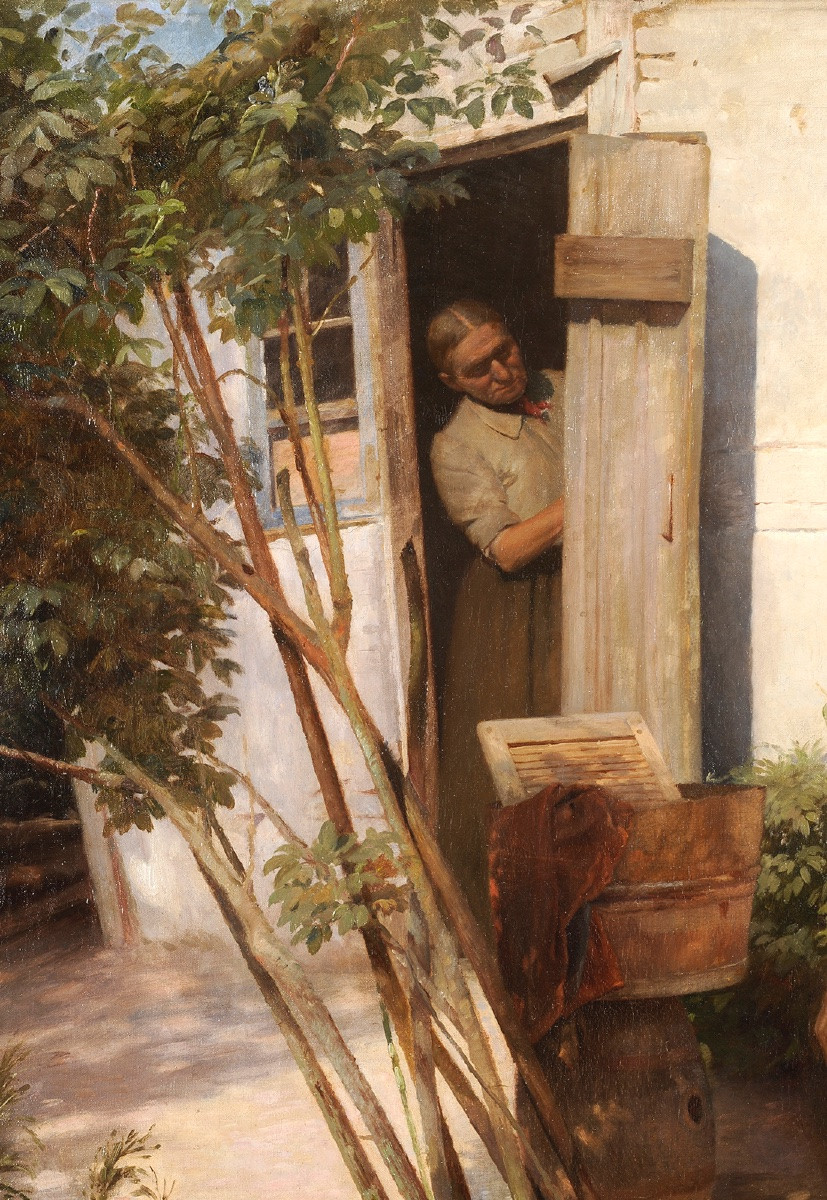
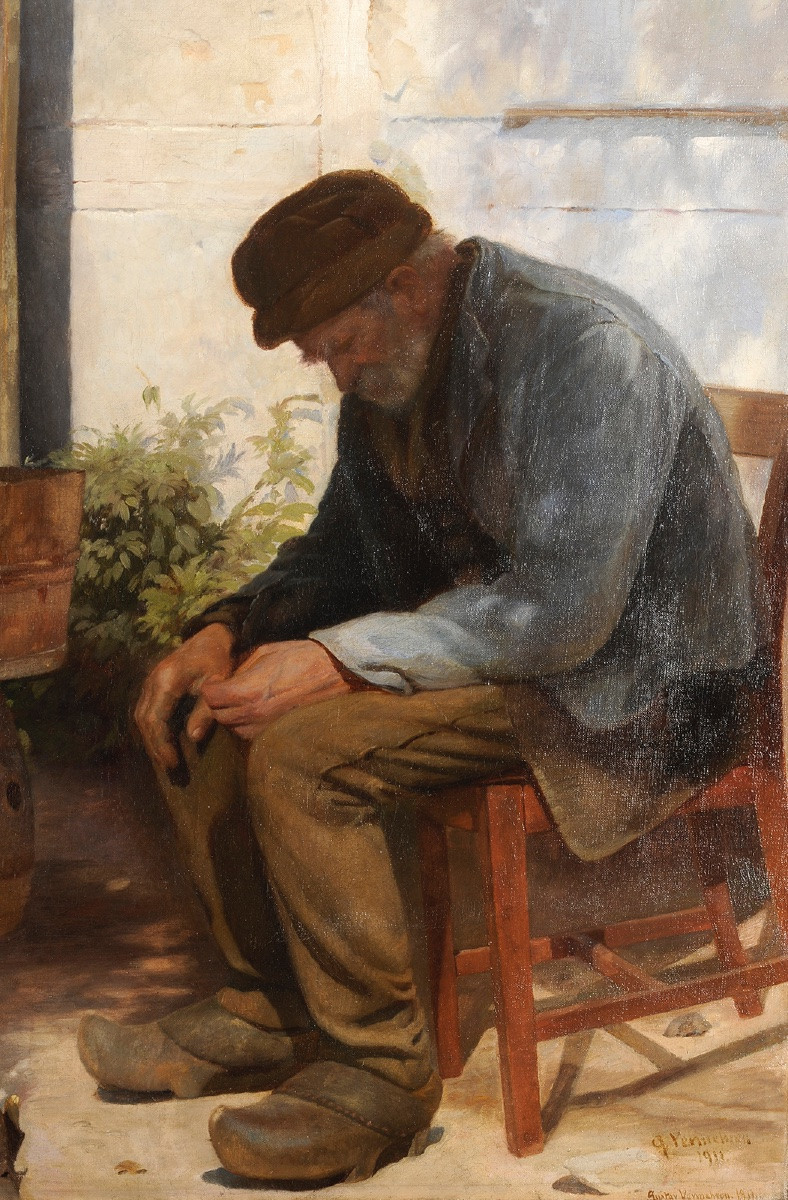
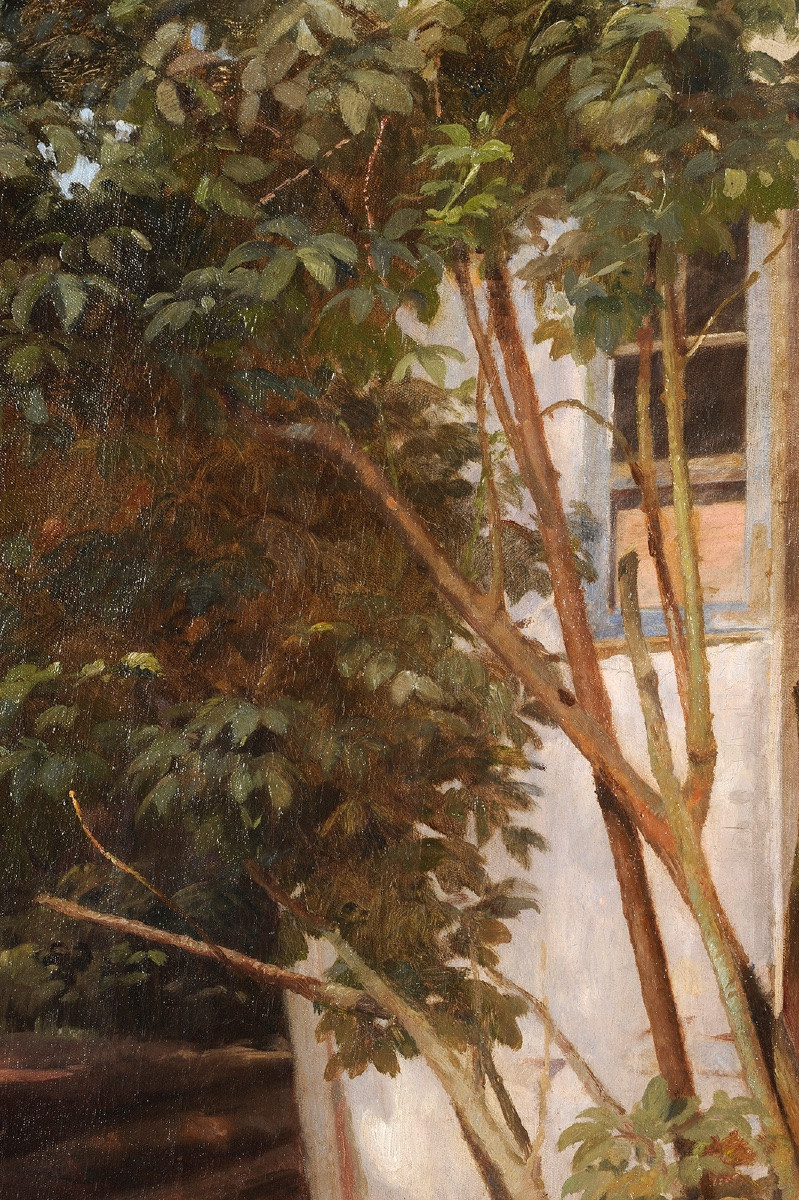

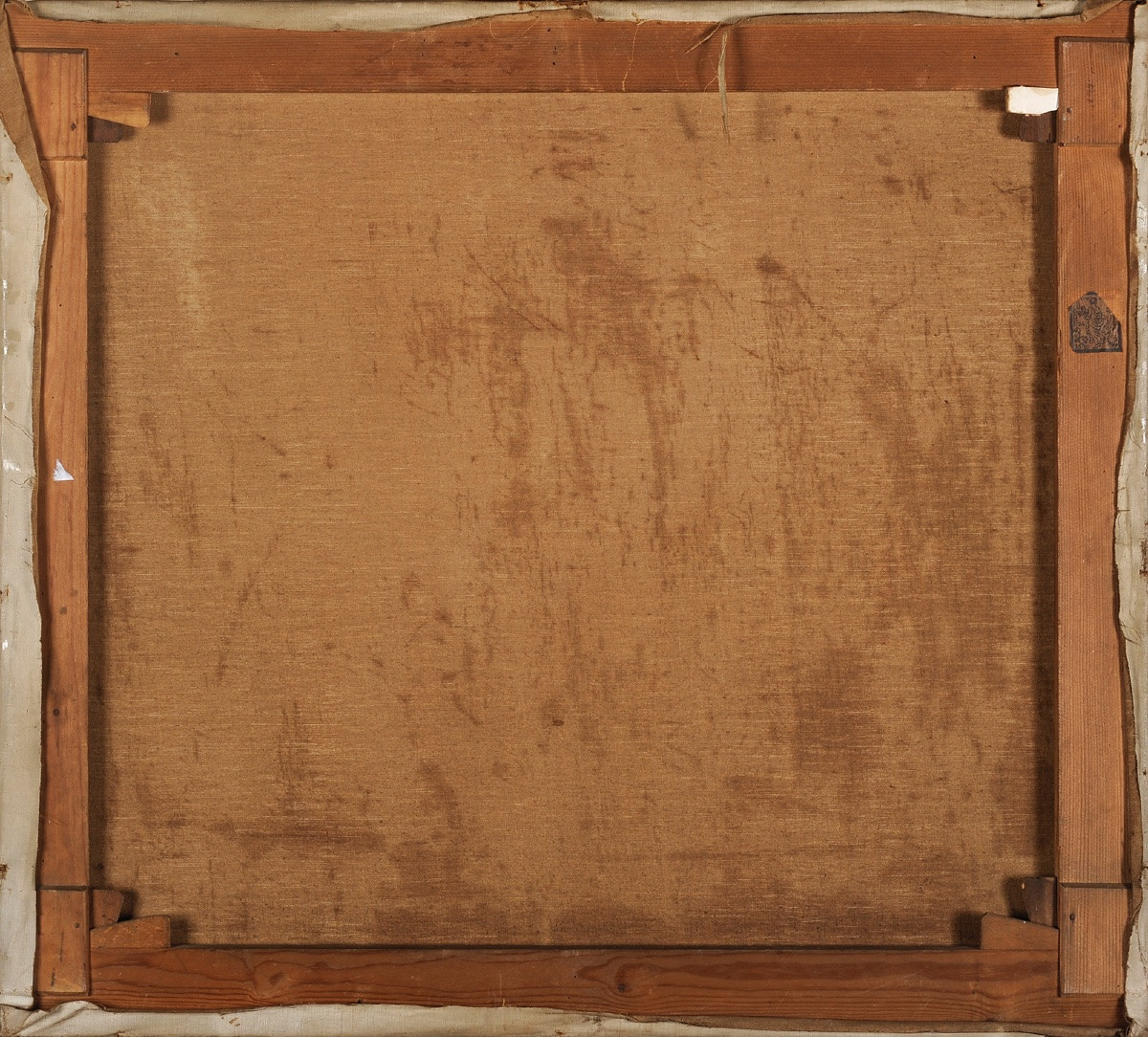








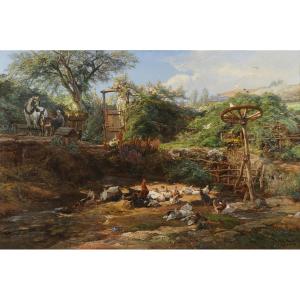




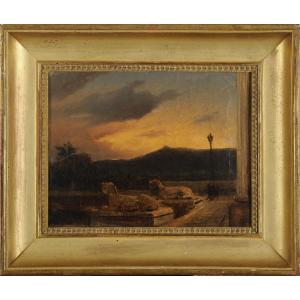
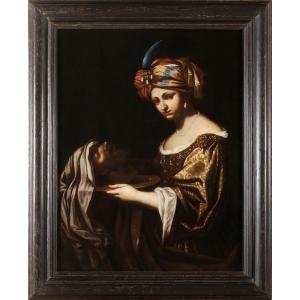






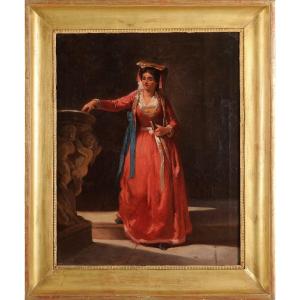


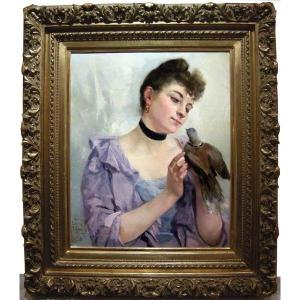






 Le Magazine de PROANTIC
Le Magazine de PROANTIC TRÉSORS Magazine
TRÉSORS Magazine Rivista Artiquariato
Rivista Artiquariato